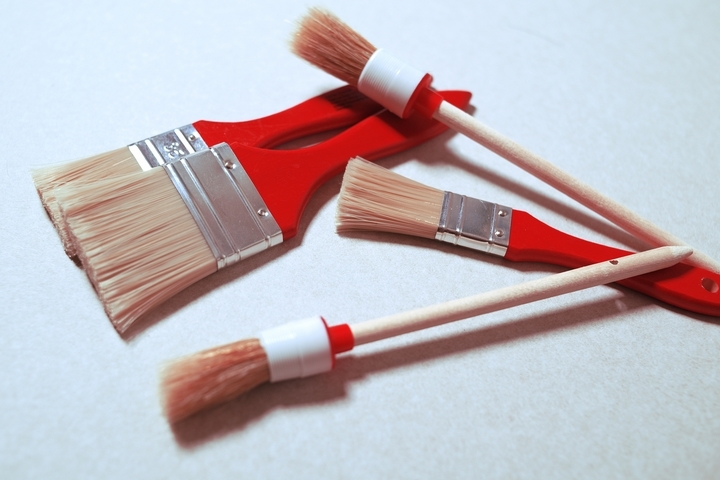Choosing new colours for your home is the most exciting part of a paint project. You likely spent hours browsing inspirational looks and poring over the endless number of shade swatches you can choose from. Once you’ve decided on your new paint colours, however, it’s important to take some time to consider which paintbrushes you’ll use on your walls, ceilings, and fixtures before you dash out to buy your supplies.
Although it’s arguably a less exciting part of the project, researching the different types of paintbrushes and choosing the right ones for your application can make a big difference in the final outcome. So, it’s a good idea to put some thought into this as well.
Here are twelve different types of paint brushes for walls, trim work, and more:
Type #1: Small Paintbrushes
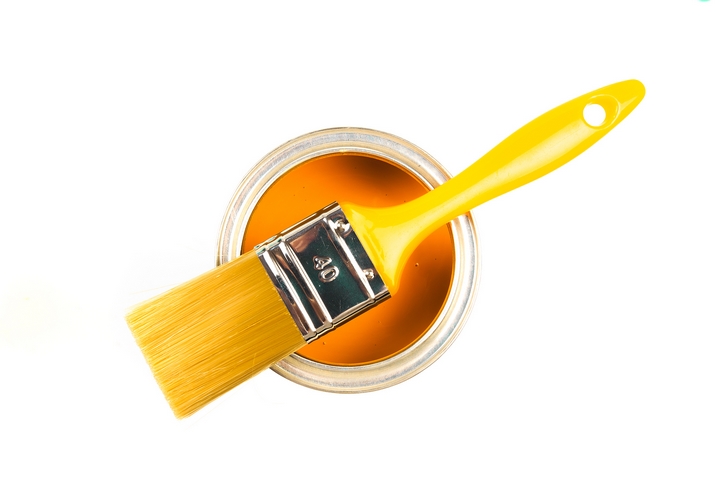 Smaller paintbrushes range from one inch to two-and-a-half inches in size. They are the ideal type of paint brushes for walls to paint tight areas, such as corners, trim, and window areas.
Smaller paintbrushes range from one inch to two-and-a-half inches in size. They are the ideal type of paint brushes for walls to paint tight areas, such as corners, trim, and window areas.
Type #2: Medium-Sized Paintbrushes
 When you’re painting doors, shelving, or cabinets, choose a three-inch brush. These types of paint brushes are ideal for painting walls.
When you’re painting doors, shelving, or cabinets, choose a three-inch brush. These types of paint brushes are ideal for painting walls.
Type #3: Large Paintbrushes
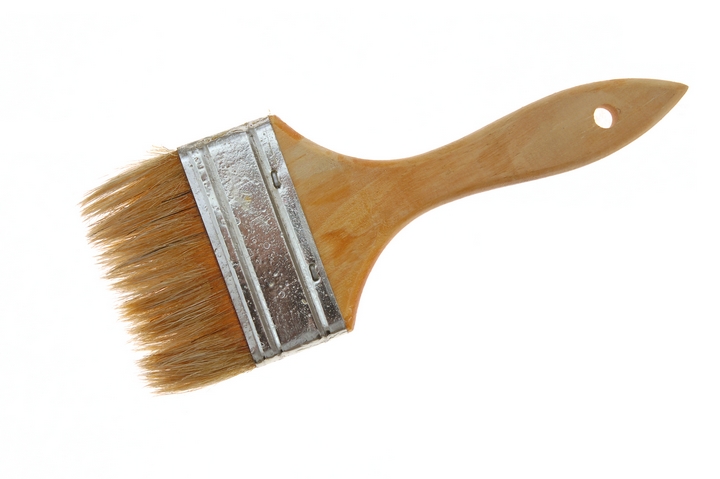 For large areas such as walls and ceilings, the best paintbrush to use is a large one. Specifically, make sure you have brushes on hand that range from four inches to six inches in size for these applications.
For large areas such as walls and ceilings, the best paintbrush to use is a large one. Specifically, make sure you have brushes on hand that range from four inches to six inches in size for these applications.
Type #4: Natural Brushes
 The brush’s material matters. Natural brushes are made from animal hair, such as badger or hog hair. They tend to hold more paint and ultimately create a smoother finish.
The brush’s material matters. Natural brushes are made from animal hair, such as badger or hog hair. They tend to hold more paint and ultimately create a smoother finish.
You should choose a brush with natural bristles if you’re applying an oil-based paint, polyurethane, top coats, shellac, varnish, enamel, or decorative chalk paint. It’s a great option for applying furniture wax, too.
Natural brushes shouldn’t be used for water-based paints, as they’ll soak up too much of the water and end up being less effective.
Type #5: Synthetic Paintbrushes
 A synthetic paintbrush, made from high-quality polyester or a nylon/polyester blend, should be used when applying water-based paint since natural brushes don’t work well in this type of application. A synthetic brush should also be used when using acrylic latex-based paint, such as low- and no-VOC paints.
A synthetic paintbrush, made from high-quality polyester or a nylon/polyester blend, should be used when applying water-based paint since natural brushes don’t work well in this type of application. A synthetic brush should also be used when using acrylic latex-based paint, such as low- and no-VOC paints.
Type #6: Angle Sash Paintbrushes
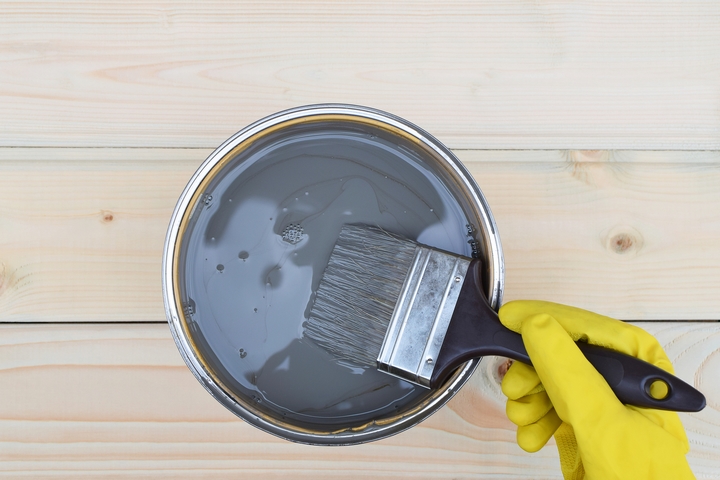 This short-handled, angled paintbrush was first designed to fit inside window frames to paint window sashes. Its bristles are cut on a sharp slant, which creates clean lines. It’s often called a “cutting” brush since it’s known for cutting in around walls.
This short-handled, angled paintbrush was first designed to fit inside window frames to paint window sashes. Its bristles are cut on a sharp slant, which creates clean lines. It’s often called a “cutting” brush since it’s known for cutting in around walls.
Because the handle is very short, you enjoy greater control, work faster, and pretend arm fatigue. It offers great stability and maneuverability, so it’s not only the buy anavar perfect option for windows but for detail work, such as edges, corners, molding and grooves. It’s also excellent for reaching around obstacles, such as behind toilets.
Type #7: Round Sash Paintbrushes
 These little paintbrushes can range from 20 to 44 mm in size and feature a blunt, tapered end with soft edges. They’re typically used for decorative painting, such as faux finishes, as well as furniture painting.
These little paintbrushes can range from 20 to 44 mm in size and feature a blunt, tapered end with soft edges. They’re typically used for decorative painting, such as faux finishes, as well as furniture painting.
Many painters also use the round sash brush for small trim, such as window muntins. It’s a good paintbrush to have on hand for those moments when you need extra control over your paint and precisely where you place it.
Type #8: Square Cut Paintbrushes
 This is the standard wall paintbrush – it’s bristles are square cut, making it ideal for flat surfaces such as interior and exterior walls, siding, paneling, and flat doors.
This is the standard wall paintbrush – it’s bristles are square cut, making it ideal for flat surfaces such as interior and exterior walls, siding, paneling, and flat doors.
These types of paintbrushes tend to be more precise than rollers, so they’ll not only create high-quality results, but they may also save you money on paint.
Type #9: Flagged-Bristle Paintbrushes
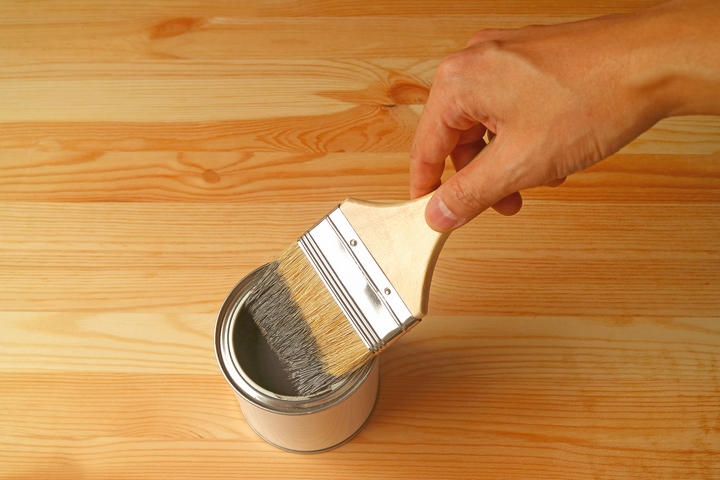 Consider a wall paintbrush with “flagged” bristles. This means the bristles are split at the ends, which allows them to hold more paint and ultimately provide more coverage.
Consider a wall paintbrush with “flagged” bristles. This means the bristles are split at the ends, which allows them to hold more paint and ultimately provide more coverage.
Plus, the paint tends to be released more smoothly when you use a brush with flagged bristles, so you can create a clean finish.
Type #10: Finishing Brushes
 Invest in a finishing brush to ensure your surfaces are smooth and can withstand scrutiny. Due to its softer-than-normal ox hair bristles, the finishing brush ensures that your paint project doesn’t look streaky or messy.
Invest in a finishing brush to ensure your surfaces are smooth and can withstand scrutiny. Due to its softer-than-normal ox hair bristles, the finishing brush ensures that your paint project doesn’t look streaky or messy.
It’s the brush of choice for paint jobs like banisters and kitchen cabinet doors – any project that requires a smooth finish.
Type #11: Foam Brushes
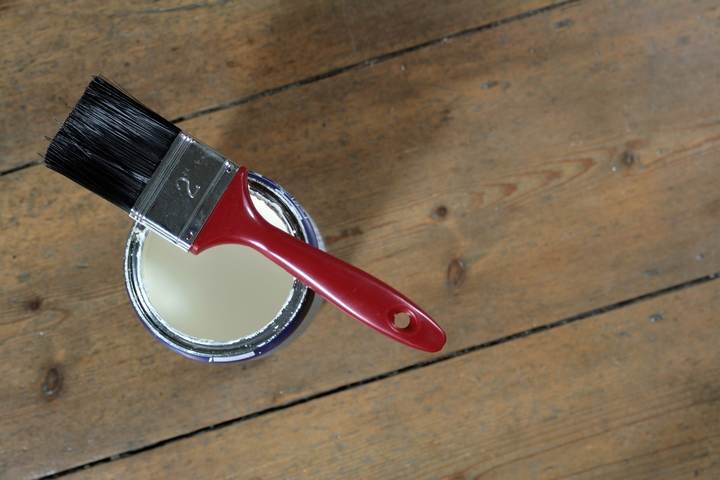 Foam brushes aren’t meant for full wall painting, but they are essential to some paint projects around the home.
Foam brushes aren’t meant for full wall painting, but they are essential to some paint projects around the home.
These types of paintbrushes are specifically designed for use with paint, stain, and urethane. They will produce a smooth finish. They’re an inexpensive option to consider for furniture, cabinetry, and trim work.
Type #12: Stencil Brushes
 These unique paintbrushes should only be used to create stencil work on your walls. They differ from typical paintbrushes because they’re round and have more bristles packed together. The bristles are all the same length, so they won’t cause a mess when stenciling.
These unique paintbrushes should only be used to create stencil work on your walls. They differ from typical paintbrushes because they’re round and have more bristles packed together. The bristles are all the same length, so they won’t cause a mess when stenciling.
Consider what areas you’ll need to paint during your painting project and make sure you have the right paintbrushes on hand for the work.

